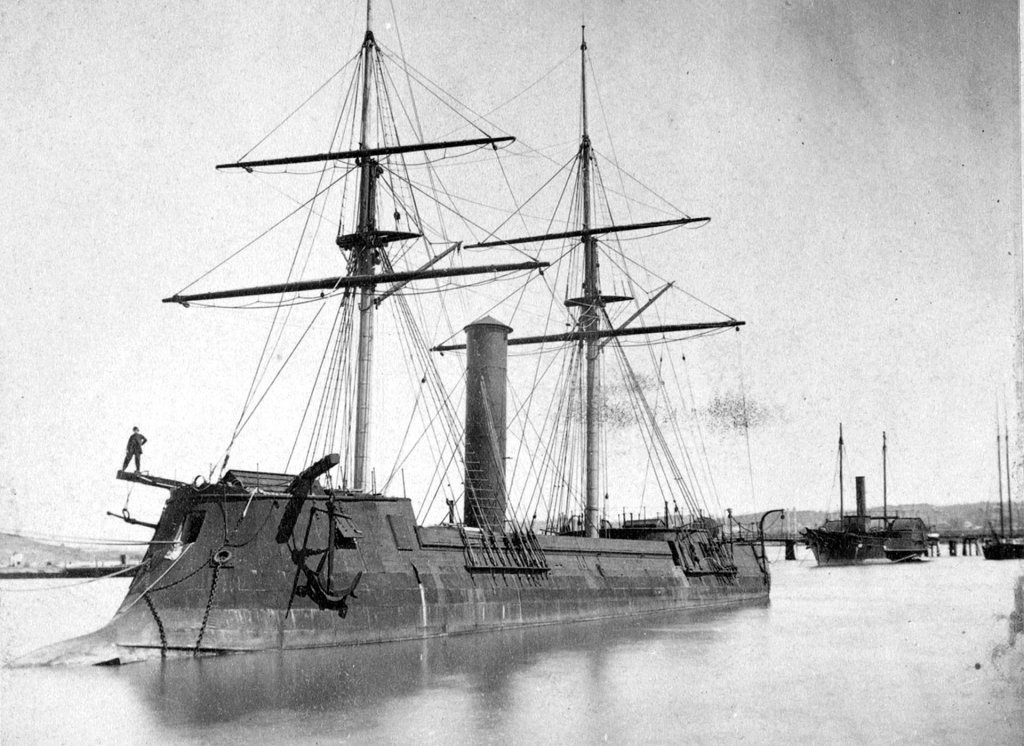It’s not uncommon for warships to serve the navies of different countries in their lifetimes. The Argentine cruiser ARA General Belgrano (C-4) that was sunk during the Falklands War in 1982 was first commissioned as the USS Phoenix (CL-46) in 1938. In a similar vein, Japan’s first ironclad warship was originally built for the Confederate States Navy.

On October 12, 1861, CSS Manassas became the first ironclad to see combat at the Battle of the Head of Passes on the Mississippi River. Protected by iron or steel armor plates, ironclads held a significant tactical advantage over conventional warships made of wood. During the Civil War, the Union built dozens of the type. The Confederacy built ironclads domestically but also purchased them from Europe. While the CSA was able to place ironclad orders overseas, getting the ships to America was a challenge. Most were confiscated, especially by Russia which openly supported the Union.
In 1863, the Confederacy struck a deal with French Emperor Napoleon III. French shipbuilder Lucien Arman, a close acquaintance to Napoleon, would construct two ironclads for the CSA in secret so as not to openly violate the French law against providing warships to a nation at war. To that end, the guns for the ships were manufactured separately and the ironclads were named Cheops and Sphinx to suggest they were commissioned by Egypt.

However, prior to the delivery of the ironclads, the U.S. discovered France’s secret arrangement with the Confederacy. Under political pressure, the French government blocked the sale of the ships. Instead, on March 31, 1864, Cheops was sold to Prussia as Prinz Adalbert and Sphinx was sold to Denmark as Stærkodder. The Danish Navy took delivery of the ironclad on June 21, 1864, and conducted a shakedown cruise. Stærkodder arrived in Copenhagen on November 10, 1864.
At the beginning of 1865, Denmark sold Stærkodder to the Confederate States of America, the ship’s original customer. On January 6, 1865, a Confederate Navy crew took delivery of the ironclad in Copenhagen. Renamed CSS Stonewall, the ship was damaged in a storm before it left Europe. While repairs were made in Spain, news of the Confederate ironclad reached the Union. During February and March, Union ships observed Stonewall from afar. When Stonewall put to sea on March 24, 1865, the Union ships declined to fight her and she sailed across the Atlantic for the Caribbean. The ironclad arrived in Nassau, Bahamas, on May 6. Five days later, Stonewall arrived in Havana, Cuba, where her crew learned of the war’s end.

Stonewall was turned over to the Spanish government in Cuba, who then turned her over to the U.S. The ironclad arrived at the Washington Navy Yard on November 24, 1865. Two years later, seeking to modernize their navy, representatives of the Tokugawa shogunate in Japan purchased Stonewall from the U.S. for $400,000. In Japanese service, she was renamed Kōtetsu, which translates to “Ironclad.” When the ship arrived in Japan in March 1869, the new Meiji government took possession of Kōtetsu.
Sailed by the Imperial Japanese Navy, Kōtetsu served as the flagship of a task force dispatched to engage the remnants of the Tokugawa Navy that remained loyal to the shogunate. On March 25, 1869, Kōtetsu repelled a surprise night attack at the Battle of Miyako Bay with her Gatling gun. She also supported the Imperial invasion of Hokkaidō and fought in the Naval Battle of Hakodate Bay.

On November 15, 1871, Kōtetsu was reclassified as a third-class warship and renamed Azuma the next month. With her fighting ability assessed as low compared to newer and better-armed ships, she was relegated to naval guard duty. Azuma was struck from the IJN register on January 28, 1888, and sold for scrap on December 12, 1889. In 1895, her armor plating made armature shafts for electric generators in Tokyo’s Asakusa Thermal Power Station.


